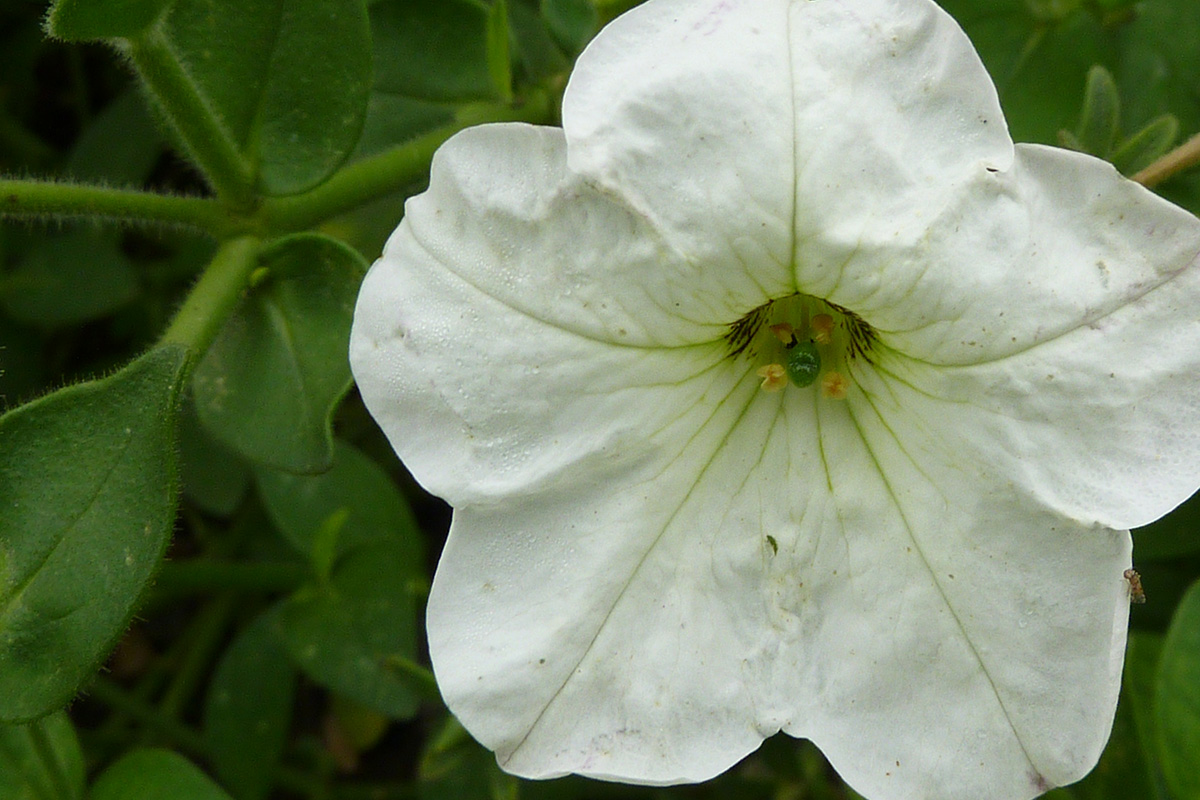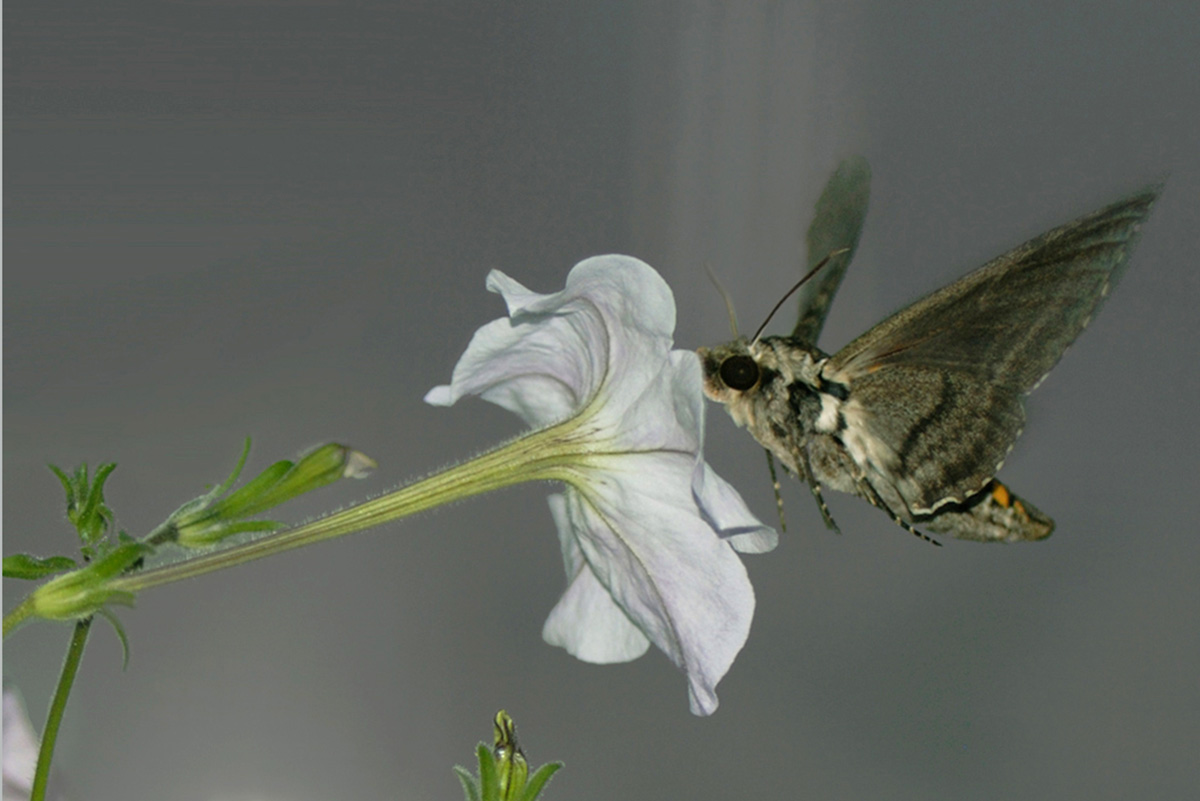The gardener’s favourite ornaments deciphered
Garden petunias are amongst the most popular ornamental plants. For the first time, it has been possible to decipher the whole genome sequence of the wild ancestors of the garden petunia. The comprehensive study was published in the renowned specialist magazine Nature Plants last week. Cris Kuhlemeier from the Institute of Plant Sciences, who coordinated the study with over 50 participating researchers, explains why these research results are so important now.
Garden petunias exist in various colours, and are amongst the most popular ornamental plants, due to their flowers. The ancestors of the garden petunia Petunia × hybrida – are the wild petunias Petunia axillaris and Petunia inflata – whose home are the temperate to subtropical areas in South America. For the first time, it has been possible to determine the whole genome sequence of these two wild petunia species. Cris Kuhlemeier from the Institute of Plant Sciences at the Uni Bern says: “We have deciphered the whole DNA code, which consists of 1.4 billion 'letters'. So, now we have a sort of dictionary, which is essential to understanding this, but also other plants.”


Explanation found for colour diversity?
Petunias are particularly important in plant biology, as there are a variety of species, which stand out due to special features in morphology, fragrance or colour of the flowers. The now published study, on the one hand solves a long controversy, regarding the evolution of the genetic material of the night shadow plants, which alongside petunias, include for example tomatoes, potatoes, tobacco, pepper or aubergines. For the first time, it has been able to be proven, that there have been two doublings of the whole genome sequence. This has led to the fact, that the evolution of new features could be enormously accelerated.

Furthermore, the study shows that the gene responsible for the colouration of the flowers, can be found in highly dynamic points in the genetic material, where all types of reorganisations, doublings and deletions in the DNA take place. This could explain, why there is an enormous range of colours and colour patterns in garden petunias, says Cris Kuhlemeier.
International study coordinated from Bern
57 researchers from ten countries were involved in the study. The project was coordinated by Cris Kuhlemeier in Bern. The study was initiated six years ago, and finally submitted for publication seven months ago. It is a very complicated project, as a variety of topics from the area of petunia research are dealt with, explains Cris Kuhlemeier. Twelve manuscripts are also being published at the same time as the study, which deal with various aspects, such as the symbiosis between petunias and micro-organisms, with small ribonucleic acid molecules (RNA) or the biorhythm of plants.
Research for climate change mitigation
Cris Kuhlemeier himself primarily researched the interaction of the petunias with their pollinators. According to morphology, fragrance or colour of their flowers, the plants attract bees, moths or even hummingbirds, which pollinate them. Over the course of their evolution, petunias have specifically and quickly adapted to three different types of pollinators. This adaptation is of enormous significance, as – in order to survive –plants are reliant on pollinators, who transfer pollen from the stamen to the carpel. The population of pollinators can for example be affected by climate change, as Kuhlemeier explains. “That is why it is important for plants to be able to adapt to the preferences of certain pollinators, by changing their colour, morphology or fragrance”, says the researcher.


According to Kuhlemeier, understanding the complex relationship between plants and their pollinators, not only provides information about the development of the various species: ”Our research also contributes to being able to specifically protect the plants and their pollinators, and influence the results of cultivation.” Also, once you have understood the pollination mechanism for one type of plant, the findings can also be transferred to other plants. The current mass death of bees, means that it is now especially important to be able to protect plants and their pollinators better.
About the person

Cris Kuhlemeier has been a professor at the Institute of Plant Sciences of the University of Bern since 1988, and is the holder of the chair for plant genetics and development biology. After a degree in biochemistry at the University of Utrecht, he worked as a postdoctoral researcher and assistant professor at the Rockefeller University in New York, before he was appointed at the University of Bern. The two focuses of his research are the molecular mechanisms of leaf position and the genetic basis of the speciation in petunias.
Contact:
Prof. Dr. Cris Kuhlemeier
University of Bern
Institute of Plant Sciences
+41 31 631 49 13
cris.kuhlemeier@ips.unibe.ch
The Study in «Nature Plants»
Bombarely et al., Insight into the evolution of the Solanaceae from the parental genomes of Petunia hybrida. Nature Plants 2 (2016), DOI: 10.1038/nplants.2016.74.
Institute of Plant Sciences
The IPS investigates the whole spectrum of plant diversity, from the molecules to the cells, and the organs to whole individuals, populations, biocoenoses and ecosystems. This raises questions in genetic, physiological and ecological basic research, and leads to the handling of a multitude of related topics. So, the IPS pursues this question amongst others – why – when most varieties tend to remain stable – do certain local species become increasingly rare, and various exotic species tend to spread. Equally, the evolution and adaptation of plants to global environmental changes, and the interactions of plants with pollinators or plant eating animals, are also being investigated.
About the author
Brigit Bucher works as the Deputy Manager of Corporate Communication at the University of Bern, and is an editor at “uniaktuell”.